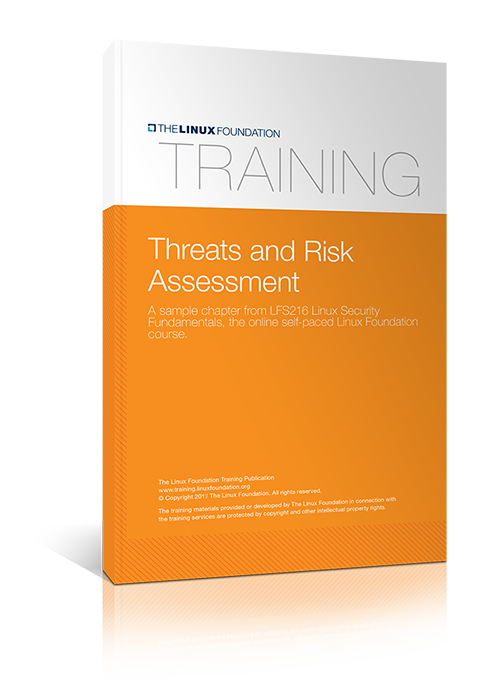Start exploring Linux Security Fundamentals by downloading the free sample chapter today. DOWNLOAD NOW
Earlier in this series, you learned the types of hackers who might try to compromise your Linux system, where attacks might originate, and the kinds of attacks to expect. The next step is to assess the security risks to your own system and the costs of both securing, and not securing, your assets in order to begin formulating a security plan.

Next, calculating the value of the assets will help determine the amount of security that should be implemented to protect those assets. It may not always be cost-effective to protect everything. Many types of attacks can be mitigated by implementing minimal security. It is not likely possible to protect all assets, all of the time.
And finally, knowing the potential impact to business operations is also essential in determining the level of security required for any particular asset. If the business is severely impacted due to a compromise, then more resources should be dedicated to maintaining the security of the assets. Another business consideration is the impact of adding additional security to the environment, possibly creating a performance challenge.
Let’s look at each of these areas in turn and some important factors to consider and questions to ask as you’re evaluating the trade-offs.
Likelihood
Evaluating the feasibility of a potential attack is important. Is the threat real or theoretical? You can begin to asses the risk by asking:
• Method: Are the skills, knowledge, tools, etc. available?
• Opportunity: Is there time and access?
• Motive: Is it an intentional act or an accidental damage?
Recently, it has been demonstrated that fingerprint scanners on smart phones can be fooled into thinking an authorized user has scanned their fingerprint. The researchers claimed that the attack was rather easy to accomplish. The reality is that the particular attack required a fair amount of specific things to happen in proper order to be successful. This is rather unlikely.
Even if the methods are well-known, if the tools are difficult to acquire, only the most resource-wealthy will be able to perpetrate the attack. Access and opportunity are also areas that can be designed into a system, such that attacks can only be accomplished during certain windows. By limiting the opportunity to certain situations, time-based or access-based, security costs can be reduced outside of those situations.
Asset Value
A thorough inventory of business assets will be the basis for the valuation required when determining what and how much security will be required.
Most environments handle this process via an Asset Management System. The roles of each asset will also determine the importance of the asset in the business operations. Components that are not expensive and yet carry large responsibility for operations should be considered highly valuable. Estimating the impact of a service outage, damage to the infrastructure, or compromise will also be necessary in determining the value of the assets.
To determine asset value, you should:
• Identify network/system/service assets
• Determine asset roles and relationships
• Evaluate the impact of asset damage/failure/loss.
In part four we’ll consider the difficulty of estimating the cost of a cyber attack and give you some questions to ask when weighing the cost of protecting your business assets, with the business impact of a potential security compromise.
Stay one step ahead of malicious hackers with The Linux Foundation’s Linux Security Fundamentals course. Download a sample chapter today!
Read the other articles in the series:
Linux Security Threats: The 7 Classes of Attackers
Linux Security Threats: Attack Sources and Types of Attacks
Linux Security Fundamentals: Estimating the Cost of a Cyber Attack
Linux Security Fundamentals Part 5: Introduction to tcpdump and wireshark


